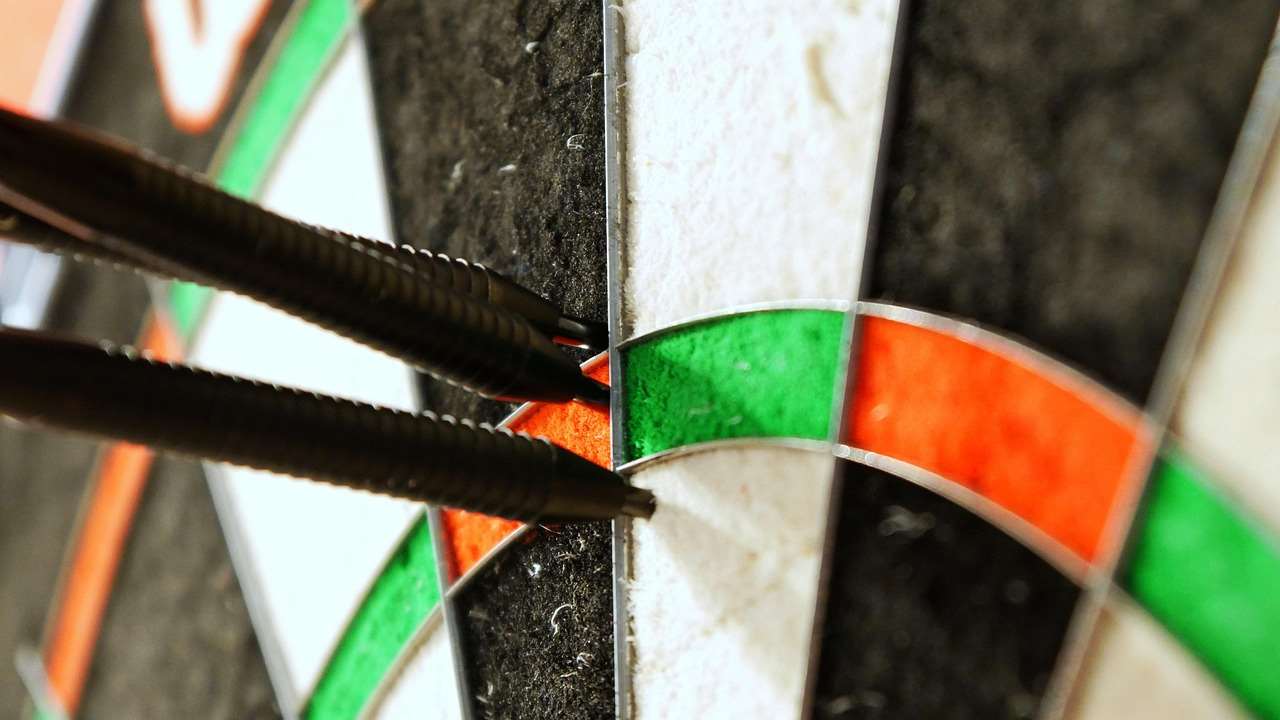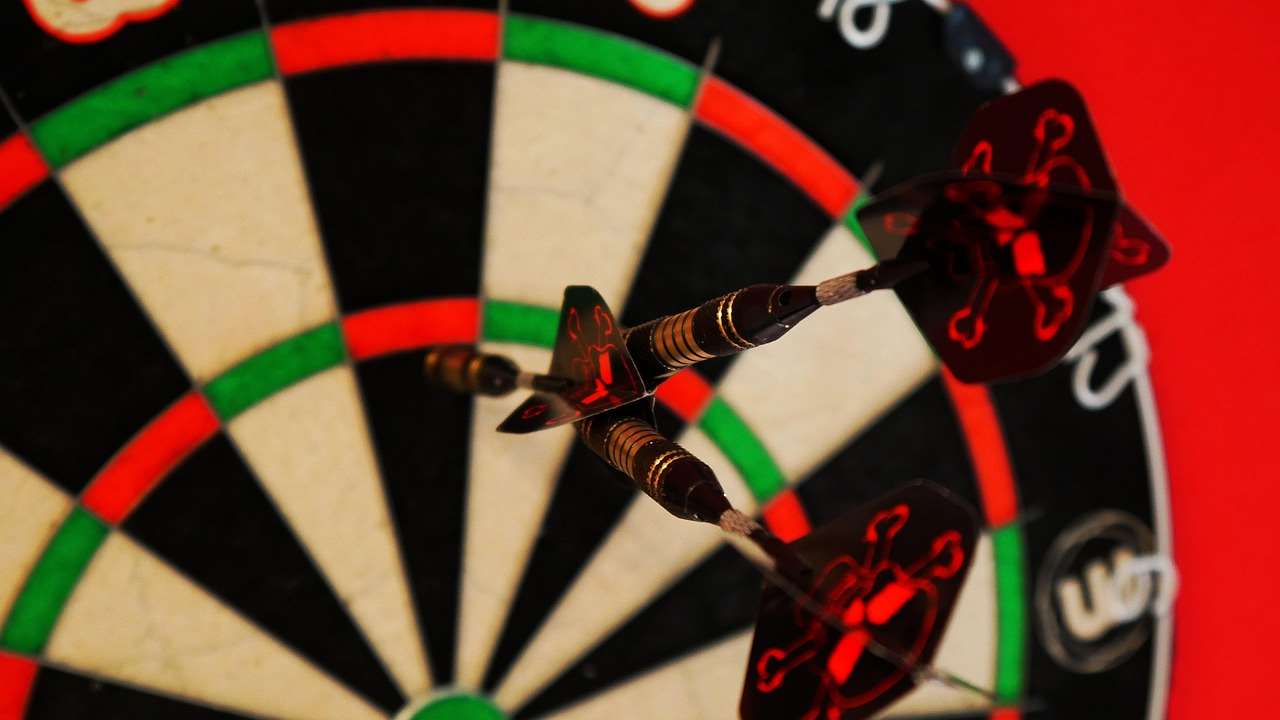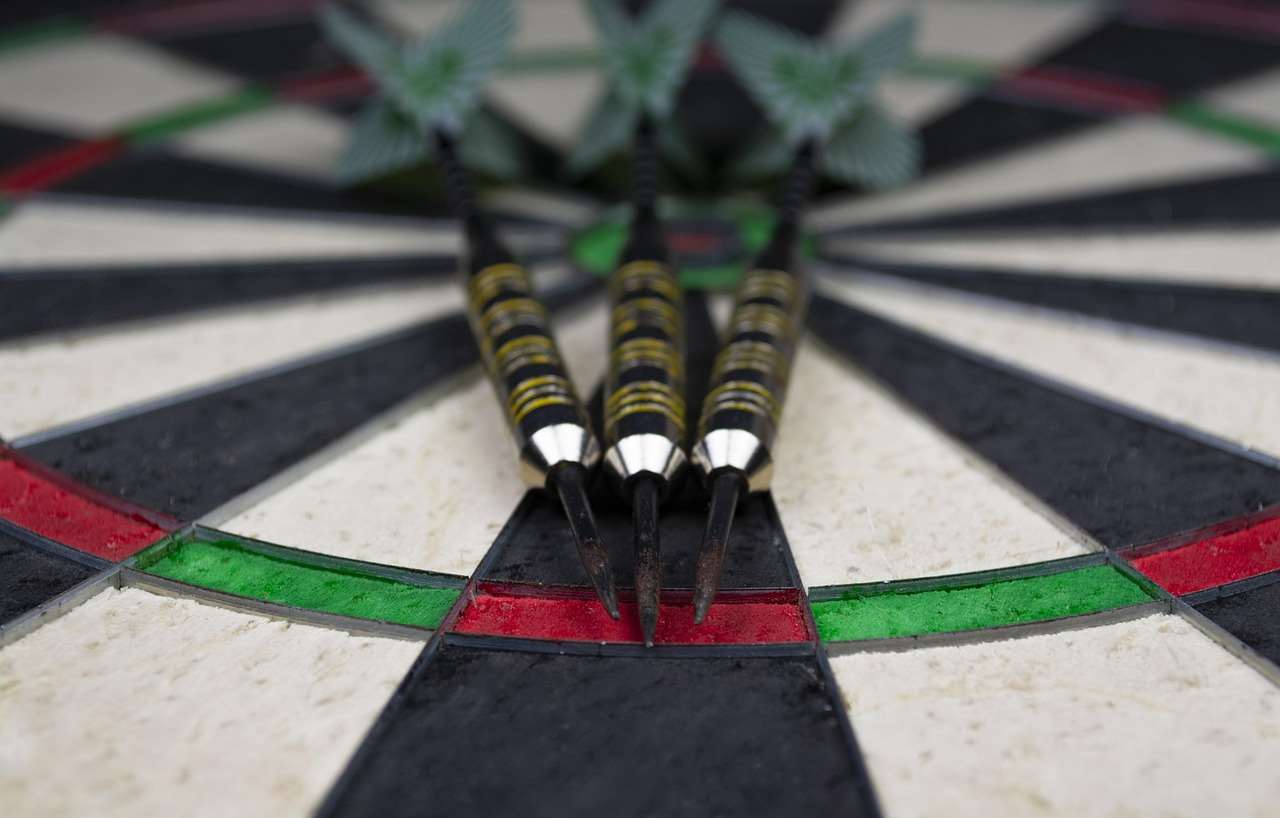Choosing the right dart material can drastically improve your game; ultimately, understanding the properties of each material ensures a better throwing experience and improved accuracy. This Choose Right Dart Material Guide will delve into the most common materials used for darts, explaining their pros, cons, and ideal use cases, so you can find the perfect fit for your skill level and playing style.
⚠️ Still Using Pen & Paper (or a Chalkboard)?! ⚠️
Step into the future! The Dart Counter App handles all the scoring, suggests checkouts, and tracks your stats automatically. It's easier than you think!
Try the Smart Dart Counter App FREE!Ready for an upgrade? Click above!
Choosing the Right Dart Material: A Comprehensive Guide
Selecting the best dart material is crucial for achieving optimal performance and enjoying your game to the fullest. Several factors come into play, including your skill level, throwing style, and budget. By understanding the properties of different materials, you can make an informed decision that suits your individual needs. This guide will explore the various dart materials available, offering insights into their strengths and weaknesses.

Dart Barrel Materials: A Detailed Look
The barrel is arguably the most important part of a dart, as it significantly impacts grip, balance, and overall feel. The most common materials used for dart barrels are tungsten, brass, nickel silver, and various alloys. Let’s examine each one in detail:
Tungsten Darts: The Professional’s Choice
Tungsten darts are widely considered the gold standard for serious players. Tungsten is a dense metal, allowing for a slimmer barrel design while maintaining the desired weight. This slimmer profile enables tighter groupings on the dartboard, increasing your scoring potential. You can also learn more about Why Choose High Tungsten Darts if you want more information.
- Pros: High density, slim profile, excellent grip, durable, professional quality.
- Cons: More expensive than other materials.
When considering tungsten darts, it’s important to understand Tungsten Percentage Explained Darts. Higher tungsten percentages (e.g., 90% or 95%) generally indicate a denser and more durable dart.
Brass Darts: Affordable and Beginner-Friendly
Brass darts are a popular choice for beginners due to their affordability. Brass is a relatively soft metal, so barrels tend to be thicker than tungsten barrels to achieve the same weight. This can make grouping more challenging, but the lower price point makes them an excellent starting point for new players.
- Pros: Affordable, readily available, good for beginners.
- Cons: Bulky barrel, less durable than tungsten, can tarnish easily.
Nickel Silver Darts: A Budget-Friendly Alternative
Nickel silver darts offer a balance between cost and performance. They are more durable than brass but less expensive than tungsten. Nickel Silver Darts Full Info can provide additional insights into this material.
- Pros: More durable than brass, less expensive than tungsten, decent grip.
- Cons: Not as slim as tungsten, can be slippery if not properly knurled.
Understanding the differences in materials is essential when trying to Choose Best Dart Equipment.

Alloy Darts: A Blend of Materials
Some darts are made from alloys, which are mixtures of different metals. These alloys can combine the desirable properties of multiple materials, such as the durability of steel with the affordability of brass. However, the specific properties of alloy darts vary depending on the composition of the alloy.
- Pros: Variable properties depending on the alloy, can offer a good balance of cost and performance.
- Cons: Properties can be inconsistent, may not be as durable as tungsten.
Dart Shaft Materials: Finding the Right Fit
The shaft, also known as the stem, connects the barrel to the flight and plays a crucial role in the dart’s overall balance and flight trajectory. Common shaft materials include nylon/plastic, aluminum, and carbon fiber.
Nylon/Plastic Shafts: Lightweight and Affordable
Nylon or plastic shafts are the most common and affordable option. They are lightweight and offer a good starting point for beginners. However, they are also the least durable and prone to breaking, especially if your darts frequently hit the floor.
- Pros: Affordable, lightweight, readily available.
- Cons: Least durable, prone to breaking, can bend easily.
Aluminum Shafts: Durable and Consistent
Aluminum shafts are more durable than nylon shafts and offer greater consistency in flight. They are heavier than nylon shafts, which can affect the dart’s balance. Aluminum shafts can bend upon impact, but they are less likely to break than nylon shafts.
- Pros: More durable than nylon, consistent flight, good value.
- Cons: Can bend upon impact, heavier than nylon.

Carbon Fiber Shafts: Lightweight and Strong
Carbon fiber shafts are the most expensive option but offer the best combination of lightweight and strength. They are incredibly durable and resistant to bending or breaking. Carbon fiber shafts are often used by professional players who demand the highest level of performance.
- Pros: Lightweight, extremely durable, resistant to bending, professional quality.
- Cons: Most expensive option.
Dart Flight Materials: Influencing Aerodynamics
The flight is responsible for stabilizing the dart in flight and influencing its trajectory. Common flight materials include polyester, nylon, and various specialty materials.
Polyester Flights: Standard and Versatile
Polyester flights are the most common type of flight and offer a good balance of durability and affordability. They are available in a wide variety of shapes, sizes, and designs, allowing you to fine-tune your dart’s flight characteristics.
- Pros: Affordable, durable, wide variety of shapes and sizes.
- Cons: Can be prone to wear and tear over time.
Nylon Flights: Durable and Long-Lasting
Nylon flights are more durable than polyester flights and are less likely to tear or become damaged. They are also slightly heavier than polyester flights, which can affect the dart’s flight characteristics. Nylon flights are often used by players who want a more durable and long-lasting flight.
- Pros: More durable than polyester, long-lasting.
- Cons: Slightly heavier than polyester, can be more expensive.

Specialty Flight Materials: Enhanced Performance
Some flights are made from specialty materials, such as holographic or textured materials, which can enhance their aerodynamic properties and improve flight stability. These flights are often more expensive than polyester or nylon flights but can offer a performance advantage for serious players.
- Pros: Enhanced aerodynamic properties, improved flight stability.
- Cons: More expensive than polyester or nylon.
Maintenance and Care for Different Dart Materials
Proper maintenance and care can significantly extend the lifespan of your darts. Tungsten darts, while durable, can still benefit from regular cleaning to remove dirt and oils that can affect grip. Brass darts are prone to tarnishing and should be cleaned with a brass cleaner to maintain their appearance. Shafts and flights should be inspected regularly for damage and replaced as needed. Understanding the **Best Material For Darts Barrels** and their upkeep is key.
- Tungsten: Clean regularly with a soft cloth to remove dirt and oils.
- Brass: Clean with a brass cleaner to prevent tarnishing.
- Shafts: Inspect regularly for damage and replace as needed.
- Flights: Replace when torn or damaged.

Making the Right Choice: Consider Your Needs
Ultimately, the best dart material for you depends on your individual needs and preferences. Consider your skill level, throwing style, and budget when making your decision. If you are a beginner, brass darts may be a good starting point. If you are a serious player looking for the best possible performance, tungsten darts are the way to go. Don’t be afraid to experiment with different materials and find what works best for you. Remember to compare Brass vs Tungsten Darts Comparison before making a final decision.
Conclusion: Your Journey to Darting Excellence
Choosing the right dart material is an investment in your darting journey. By understanding the properties of different materials and considering your individual needs, you can find the perfect set of darts to enhance your performance and enjoyment of the game. From the density of tungsten to the affordability of brass, each material offers unique advantages. So, explore your options, experiment with different setups, and discover the perfect combination that will take your dart game to the next level. Now that you’ve read this Choose Right Dart Material Guide, take the next step and Choose Best Dart Equipment!
Hi, I’m Dieter, and I created Dartcounter (Dartcounterapp.com). My motivation wasn’t being a darts expert – quite the opposite! When I first started playing, I loved the game but found keeping accurate scores and tracking stats difficult and distracting.
I figured I couldn’t be the only one struggling with this. So, I decided to build a solution: an easy-to-use application that everyone, no matter their experience level, could use to manage scoring effortlessly.
My goal for Dartcounter was simple: let the app handle the numbers – the scoring, the averages, the stats, even checkout suggestions – so players could focus purely on their throw and enjoying the game. It began as a way to solve my own beginner’s problem, and I’m thrilled it has grown into a helpful tool for the wider darts community.